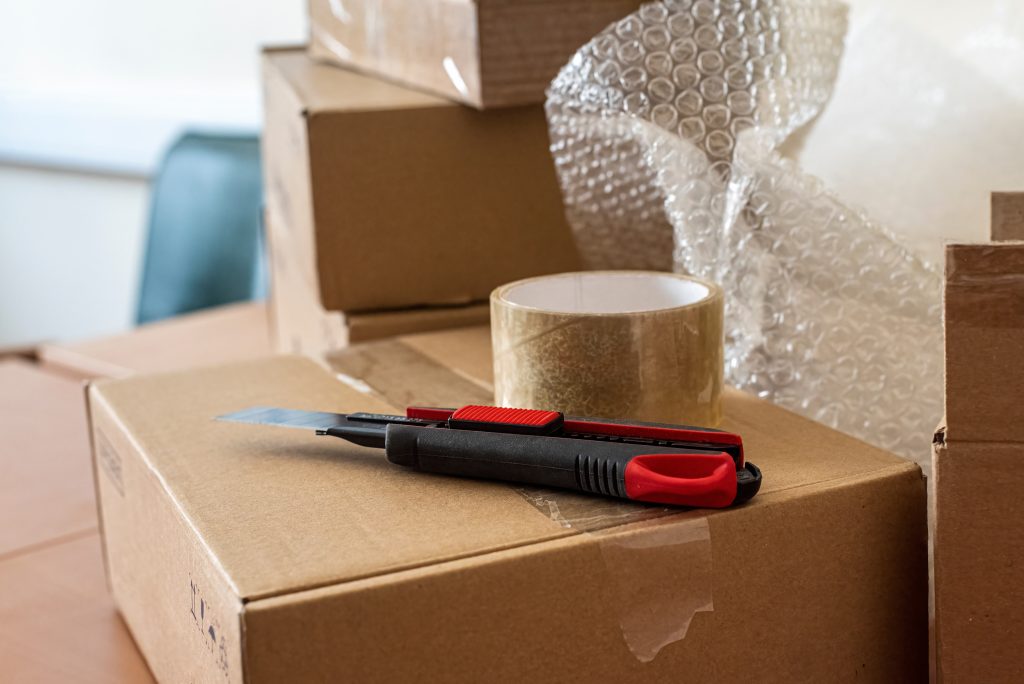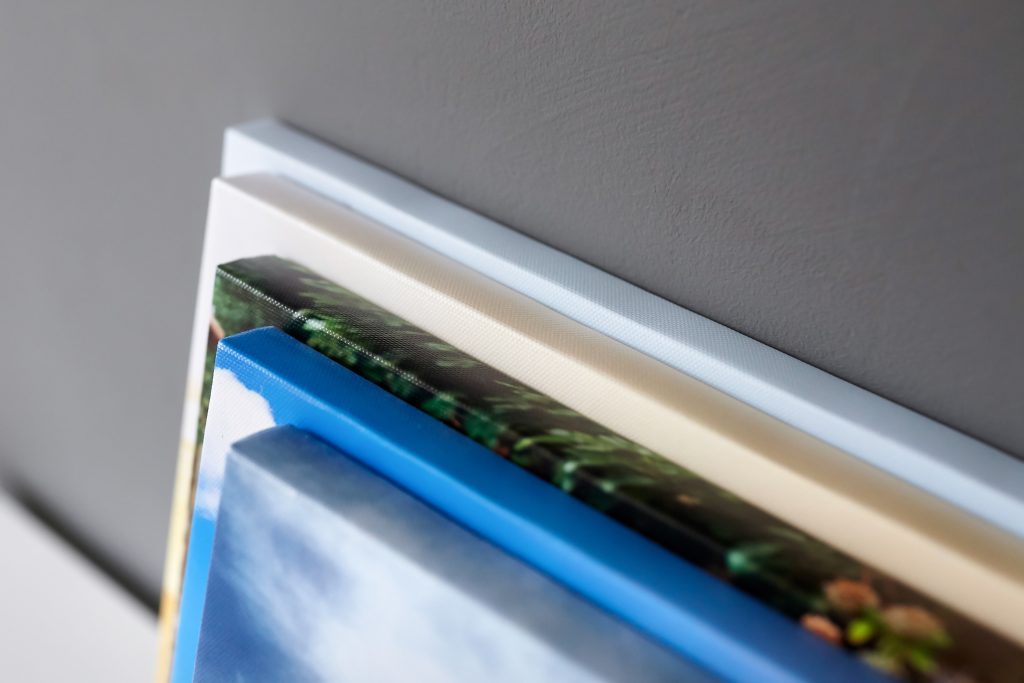Most American families have several paintings hanging in their homes. Paintings brighten up a room, add life to your home, and are nice to look at and enjoy. They can also be great conversation starters when entertaining. Some folks take up painting as a hobby and have more than average. If that’s you and you need to store your paintings, the info below is perfect. We’ll discuss how to store your paintings to protect them when they’re not on the wall. To discover the best methods of storing your paintings, read on!
Estimated reading time: 6 minutes

Purchasing Supplies
Before you can store your paintings, you need to purchase some supplies to pack them correctly. It’s not a huge list by any means, but some of the supplies are rather specific. They include:
- Boxes specifically made for packing paintings. (aka mirror cartons)
- Large paper pads.
- Acid-free (or archival) paper.
- Packing tape.
- Small bubble wrap.
- Razor knife
You can purchase most of these packing supplies at your local iStorage self-storage location or big box department store. Paper pads are a godsend but a little more difficult to find locally. You can purchase paper pads online or check Craigslist to see if you can find them for free.
Storing Paintings in your Home
Storing paintings in your home, if you have the extra space, is easier than in a storage unit. That’s because you don’t have to pack and prepare them nearly as much. In fact, if you have a large enough closet, you can simply stand your paintings against each other. We recommend placing a sheet between each painting, so they don’t rub against each other. Also, never lay your paintings flat. Instead, stand them on edge. That will significantly reduce the chance of damage from something falling or someone stepping on them.
You should avoid a few areas when storing your paintings at home. For example, storing paintings in your basement or attic is not a great idea. Most basements are too damp, and most attics are too hot, especially in summer. The humidity and heat can be very problematic for paintings. They can cause them to warp, dry out, crack, peel or otherwise get damaged. However, when you’re out of space at home, your best choice for storing paintings and canvas is a storage unit.
Storing Paintings in a Storage Unit
Storing paintings in a storage unit is a different ballgame entirely from storing them at home. It involves moving your paintings from your home to your storage unit, of course. They also should be in mirror boxes for the best protection. Packing your paintings is relatively easy if you have the right materials (as discussed earlier.) Below are step-by-step instructions on how to pack paintings for storage.
- Take the two parts of a mirror box and put them together using packing tape. Mirror boxes telescope into each other. There is a smaller box and a larger box that slides over it.
- Crumple seven or eight sheets of packing paper and stuff them into the bottom of the small side of your mirror box. This paper will be the “cushion” your paintings sit on while in the box.
- Using a large paper pad, wrap each painting like a package, ensuring it is completely covered.
- Tape the pad, so it doesn’t fall off.
- Slide a wrapped painting into the smaller side of your mirror box. You can put in a second or even a third if there is enough space. Just be sure not to pack them in too tightly, as it could harm the painting.
- Slide the larger side of the mirror box over the smaller side.
- Tape the boxes together.
The nice thing about mirror boxes is that they telescope if you have an extra large painting! You can thus make it longer to fit the larger paintings you have. You can also use 2 mirror boxes (4 pieces) to pack a massive painting. If you do, we recommend asking for help from a family member or friend.
Should You Use Climate-Controlled Storage for Paintings?
Climate-controlled storage units are between 50℉ and 80℉ throughout the year. That can be extremely helpful if you live in an area where the summers are brutally hot and the winters are frigid. The reason is that the climate controls will keep your storage unit from freezing or getting deathly hot. This temperature control, in turn, will protect your precious paintings.
One caveat, though, is that climate-controlled storage does cost more. That’s why we recommend it for very valuable paintings or those with high sentimental value. A regular self-storage unit should be fine if you’re not too worried about your paintings getting slightly damaged.

Art Canvas Storage Ideas
Storing art canvases is more or less the same as storing paintings. You should store them standing on their edges, so the canvas doesn’t warp. Don’t store them where there will be exposure to high heat or moisture. (You should avoid the attic and basement.) Many painters purchase an art storage rack, which is helpful if you have many unpainted canvases. If you put them in a storage unit, we recommend packing art canvas in mirror boxes first. The same goes for painting canvases. Packing them in mirror boxes is the best protection, no question. However, if you have an art storage rack, you can also use that in a storage unit.
Tips on How to Store your Paintings Brought to you buy iStorage
Did you find today’s tips on how to store your paintings helpful? We hope you did and that your paintings stay pristine while in storage. At iStorage, our storage units are perfect for storing paintings and almost anything else you can think of. That includes collectibles, household items, antiques, baby furniture, clothes, you name it. Our storage units are safe, clean, and have 24/7 video security and on-site managers.
To find out more about self-storage and find the iStorage location near you, click this link. It’s our main web page with every iStorage location and phone number! If there’s a location near you, stop by and meet the on-site manager. They will be more than happy to answer your self-storage questions and help you in any way they can!
This post was originally posted on 09/19/2019. It was updated on 09/28/2022.
